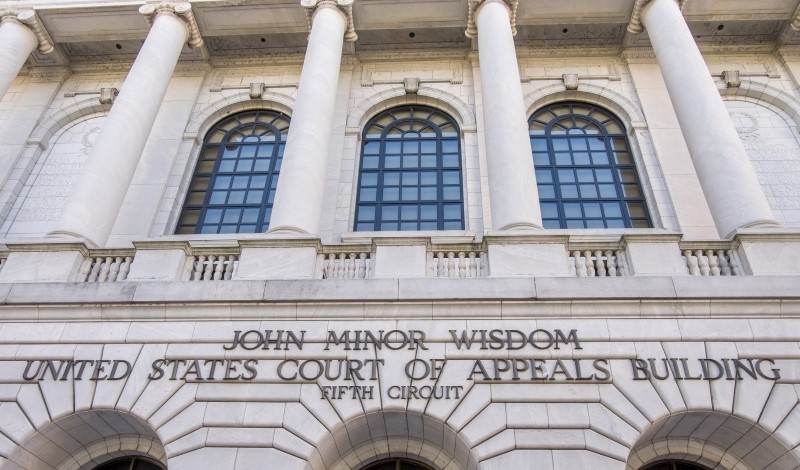
By second-guessing FDA safety determinations, the Fifth Circuit challenges the Supreme Court to restore agency deference.
In Alliance for Hippocratic Medicine v. FDA, a panel of three U.S. Court of Appeals for the Fifth Circuit judges overturned the U.S. Food and Drug Administration’s 2016 and 2021 decisions modifying the agency’s regulatory requirements for the use of the principal abortion medication, mifepristone.
As initially adopted in 2011, the modified requirements, which were reflected in what is known as FDA’s Risk Evaluation and Mitigation Strategy (REMS), had set a deadline of seven weeks from gestation for using the drug and also required that patients make three separate, in-person visits to their doctors’ offices to take the drug under their supervision.
By 2016, however, it was clear that those restrictions were not necessary to ensure the safe use of mifepristone, which by then had been taken by millions of American women. Indeed, after months of studying scores of more recent clinical studies and adverse event data, FDA concluded that those restrictions contravened Congress’ statutory directive that a REMS should not be “unduly burdensome on patient access” and should, “to the extent practicable, minimize the burdens on the health care delivery system.”
In two comprehensive decisions in 2016 and 2021, FDA therefore revised the mifepristone REMS to extend the period of permissible use to 10 weeks—still two weeks less than permitted in most other nations—and to eliminate the in-person visit requirements. The Fifth Circuit panel has now decided to reimpose both the seven-week deadline, which occurs before many women realize they are pregnant, and all three in-person visits. The panel’s ruling is currently stayed by an order of the U.S. Supreme Court that maintains FDA’s less restrictive REMS until the Court resolves FDA’s petition for review by the Supreme Court.
The stakes are huge. If the Supreme Court ultimately allows the Fifth Circuit’s decision to stand, it will severely curtail medicated abortion, not only in the 17 states that now effectively ban abortion, but also in the 33 states whose legislatures and voters have chosen to preserve the use of mifepristone as a safe and effective alternative to an unwanted pregnancy. Such a decision would force doctors in all states to observe restrictions that FDA long ago concluded were both unnecessary and unwise.
As I detailed elsewhere, the Fifth Circuit’s decision is wrong as a matter of both law and fact.
To start, the decision ignores the controlling case law of the Supreme Court—especially the opinions of its more conservative members—who have repeatedly warned, to quote Chief Justice John Roberts, against any “second-guessing by an unelected judiciary which lacks the background, competence, and expertise to assess public health and is not accountable to the people.” Remarkably, the most recent of those Supreme Court warnings came in a 2021 case, American College of Obstetricians and Gynecologists v. FDA, which involved the same initial in-person visit restriction on mifepristone at issue in Alliance for Hippocratic Medicine.
In that 2021 case, the Supreme Court reversed a decision by a federal judge who had questioned FDA’s maintenance of the office visit requirement during the COVID-19 pandemic, when the agency was permitting virtually all other drugs to be prescribed without any such visits. Significantly, FDA had not offered any analysis or scientific support to explain its position in that case. Nevertheless, the Supreme Court held that, even then, federal judges could not second-guess FDA on such a safety issue.
In the wake of the decision in American College of Obstetricians and Gynecologists, FDA conducted an additional, thorough analysis of the office visit requirement. As a result, the agency determined, in lengthy and detailed decisions in April and December 2021, that such visits were no longer appropriate in the post-COVID-19 world where telemedicine is now the norm.
The Fifth Circuit panel has now nullified both of those agency determinations. Yet, nowhere did the panel discuss, or even acknowledge, the Supreme Court’s prior decision that FDA determinations of the same issue must be respected without judicial “second-guessing.” Nor did the Fifth Circuit judges respond to the earlier opinions of Justices Samuel Alito, Brett Kavanaugh and John Roberts in Mutual Pharmaceutical v. Bartlett and Merck v. Albrecht, which also stressed the need for judicial deference to the expertise of FDA.
Having ignored the controlling case law, the Fifth Circuit panel then made a number of unsupported assertions and assumptions about the strength of the voluminous record FDA had compiled to support each of the REMS modifications that the judges had decided to overturn. Tellingly, during the oral argument in May, Judge Jennifer Elrod, who ultimately wrote the panel’s August decision, expressed concern that the administrative record underlying those FDA actions had not been compiled and submitted to the court.
When FDA counsel agreed with Judge Elrod but explained that the district judge had insisted on ruling on the plaintiffs’ motion for preliminary injunction without waiting for the record to be filed, the Fifth Circuit judges failed to obtain the record. Instead, the panel affirmed the district judge’s preliminary injunction without the studies and other data that FDA had found to be more than sufficient to modify the mifepristone REMS in 2016 and 2021.
Significantly, the Fifth Circuit panel did not dispute the results of any of the scores of clinical studies FDA had analyzed and cited to support its extension of the period of safe use and the elimination of the office visit requirement. Rather, the panel contended that they could simply ignore that extensive data because they had been told that none of the individual studies—standing alone—had been conducted in a setting where mifepristone was prescribed without any of the restrictions FDA had decided to relax. The panel simply refused to accept that each change was, in fact, supported by many studies that FDA had cited and discussed in its determinations, studies the Fifth Circuit panel did not even have.
The Fifth Circuit’s rejection of the studies on the grounds that none of them considered the “cumulative” effect of all the changes taken together was not supported by anything in the law. Tellingly, the Fifth Circuit judges did not cite any statute, regulation, prior FDA decision, or scientific treatise to support their newly discovered “rule” on evaluating scientific and medical data.
To the contrary, the statute governing REMS requires FDA to assess “any new safety data” that supports such restrictions. Yet the Fifth Circuit panel, without mentioning that statutory provision, nevertheless ruled that FDA acted “arbitrarily and capriciously” when it exhaustively reviewed all such data in 2016 and 2021.
That is hardly the “deferential” approach the Supreme Court has repeatedly demanded. Rather, it seems much more like the judicial “second-guessing” the Supreme Court has repeatedly rejected.
Finally, the Fifth Circuit panel never addressed—or even acknowledged—the countervailing benefits of reasonable access to mifepristone and, conversely, the harm the panel’s decision would do by resurrecting debilitating restrictions which FDA concluded did not reflect the most current scientific data. The panel thus ignored Congress’s mandate that a REMS must not “unduly burden” patient access. The Fifth Circuit never cited that provision nor considered the effect that its reimposition of the seven-week deadline and multiple office visits will have on the thousands of American women who seek to use mifepristone every year.
It is now up to the Supreme Court, including its more conservative members, who have been the most vocal about the importance of judicial deference to FDA safety decisions, to remedy the Fifth Circuit’s unwise ruling before it harms so many.




